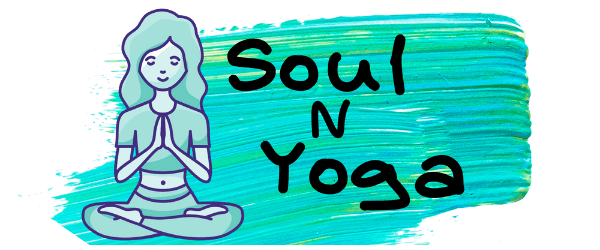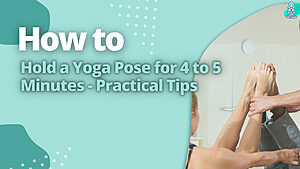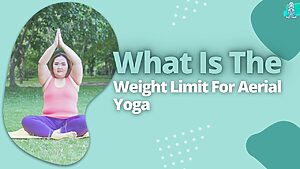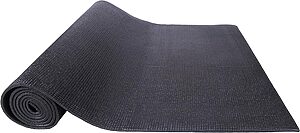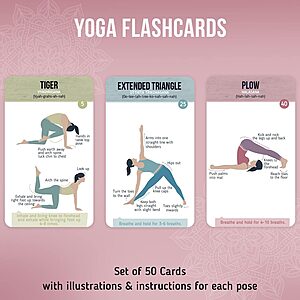I remember when I first started practicing Ashtanga Yoga. I was amazed at how quickly my body began to change. After just a few weeks, I felt stronger, more flexible, and more balanced.
If you’re thinking about starting an Ashtanga Yoga practice, you may wonder how it will change your body.
In this blog post, I’ll share with you some of the ways that Ashtanga Yoga has changed my body and my students’ bodies.
Key Takeaways
- Ashtanga yoga is a type of yoga that involves synchronizing the breath with a progressive series of postures.
- Ashtanga yoga can help to improve flexibility, strength, and stamina.
- Ashtanga yoga can also help to improve digestion, detoxification, and circulation.
- Ashtanga yoga can also help to ease anxiety and depression.
- Regular practice of Ashtanga yoga can help to improve overall health and well-being.

Here’s The Answer To How Ashtanga Yoga Changes The Body
When most people think of yoga, they picture a serene woman in flowing clothes contorting her body into pretzel-like shapes. And while that’s one type of yoga, Ashtanga is a very different beast.
Also called power yoga, Ashtanga is a dynamic and physically demanding form of yoga popularized by Sri K. Pattabhi Jois in the 20th century.
Unlike other types of yoga, Ashtanga always follows the same sequence of poses so that you can build up muscle memory and get better at each pose over time.
There are three levels of Ashtanga classes, each with different poses. The beginner’s class, for example, only consists of 12 poses, while the advanced class has more than 75.
Ashtanga Yoga Is A Physically Demanding Form Of Yoga

Ashtanga Yoga is a physically demanding form of yoga that can have transformative effects on the body. It can help you to become stronger, more flexible, and more balanced. It can also help to improve your posture and alignment.
As you practice Ashtanga Yoga over time, you will notice that your muscles are becoming stronger than they used to be because they are being used in new ways each day.
Ashtanga Yoga requires both strength and flexibility, so you need muscles that are strong enough to hold certain poses while at the same time being able to lengthen those very same muscles when needed during other poses such as backbends or balancing poses such as eagle arms (Garudasana).
Ashtanga Yoga Practitioners Can Expect To See Increased Muscle Definition, Flexibility, And Stamina
As you progress through Ashtanga Yoga, you will see increases in muscle definition, flexibility, and stamina.
You will also be able to better manage your body’s energy by increasing the range of motion that you can achieve in each pose.
The Practice Can Also Help To Improve Posture, Alignment, And Balance
With regular practice, you will find that your body awareness improves dramatically.
You’ll notice that you’re more aware of the placement of your limbs in space, how much power is behind each movement, whether or not your shoulders are pulled back and down if your feet are parallel when standing if the knee caps face inward while kneeling (that’s bad).
The simple act of paying attention to these details helps bring about a more fluid movement pattern in yoga poses—and it also makes life outside of yoga more comfortable.
Ashtanga Yoga Can Be A Great Workout For Those Looking To Boost Their Physical Fitness
Ashtanga Yoga is a challenging practice, and if you’re doing it right, you will get stronger and more flexible.
You’ll also improve your posture and breathing, feel more relaxed, less stressed, and generally better about yourself.
In my experience as a teacher in the Ashtanga tradition, I’ve seen how much a regular home practice can improve people’s lives.
The Practice Can Also Help To Reduce Stress And Promote Relaxation
In addition to the many physical benefits of Ashtanga yoga, it can also help to reduce stress and promote relaxation.
The practice is a great way of winding down after a long day and preparing for restful sleep.
As you concentrate on your breath in an Ashtanga class, you’re less likely to worry about the stresses or worries of daily life, which allows your mind to relax and focus on what’s happening right then.
How Does Ashtanga Yoga Differ From Other Types Of Yoga?

Ashtanga is considered a vinyasa-style yoga practice. Vinyasa means “to place especially” and refers to the flowing nature of the postures that make up each practice session.
Unlike other forms of physical exercise, you move from one exercise to another without resting between them (think about doing push-ups).
Ashtanga sessions feature poses that alternate between active movements and more passive stretches; this helps prevent injury while giving your muscles time to recover from exertion before moving on to another set of movements.
An Ashtanga class is physically demanding—you’ll be sweating buckets by the end! If you’re new to yoga or haven’t been practicing regularly for long periods (like going once every couple of weeks).
What Are The Benefits Of Practicing Ashtanga Yoga?
Ashtanga yoga is a type of physical exercise that involves the practice of postures, or asanas.
While there are many benefits to practicing this style of yoga, there are three main benefits to keep in mind: improved flexibility, increased strength and posture, and more energy.
Some people may also experience weight loss when practicing this form of exercise.
If you’re wondering what all these things mean for you specifically—and how they might change your body—this article will help you understand what it means to practice Ashtanga Yoga.
How Does Ashtanga Yoga Change The Body?
Ashtanga yoga is known for its physical benefits, but did you know it’s also a great tool for mental health?
One of the main reasons people practice yoga is to improve their physical health. Ashtanga yoga is no exception: it can lead to gains in muscle tone, boosts energy levels, and improves flexibility.
But if you’re new to Ashtanga or haven’t practiced in a while, here are some other ways that this style of yoga can change your body (and mind):
- Increases strength and stamina
- Improves posture
- Boosts metabolism
- If you have trouble sleeping or feel tired all day (due to poor eating habits or lack of exercise), try sun salutations before bedtime. The rhythmic movement will help relax your mind so that it naturally slows down when it’s time for sleep.
Conclusion
Ashtanga yoga is a great practice for people looking to improve their physical fitness and mental well-being.
With its combination of physical movements, breathing exercises, and meditation, this ancient form of yoga can help you achieve a more balanced body and mind.
Overall, Ashtanga yoga provides a range of benefits for both the mind and body. Ashtanga yoga is worth considering if you want to improve your physical and mental health.
Frequently Asked Questions
Will I see results quickly?
No, practice is not a quick fix. The benefits of Ashtanga yoga take time to manifest. However, with regular practice, you will see improvements in your physical health and mental well-being.
What kind of changes can I expect to see?
The benefits of Ashtanga yoga vary depending on your level of practice and personal goals. However, some common changes that people report experiencing include increased flexibility and range of motion, improved posture; reductions in stress levels; increased energy levels; and improvements in physical strength.
How long do I need to practice before seeing results?
The time it takes to see results will vary from person to person. Still, you’ll generally start noticing changes in your physical and mental well-being after around six months of consistent practice.
Can everyone benefit from Ashtanga yoga, or are there some people who shouldn’t do it?
While everyone can benefit from Ashtanga yoga, specific guidelines should be followed by those new to the practice. These include: warming up and stretching properly before each session; avoiding excessive head nodding or shaking during the postures; and practicing with a teacher if you have not done so before.
My name is Mugen Seki, and I’m a painter and yoga enthusiast who is passionate about bringing together art and exercise in ways that help people connect with their inner selves. When I’m not painting, I’m practicing yoga. And when I’m not doing either of those things, I’m usually thinking about them.
- How to Hold a Yoga Pose for 4 to 5 Minutes – Practical Tips
- A Guide to Finding the Perfect Yoga Mat for Carpet Floors
- Can You Add Yoga To Fitbit Luxe (Unlock the Power)
- Can You Add Yoga To Garmin Vivoactive (Yoga On The Go)
- Is Aerial Yoga Dangerous (The Scary Truth)
- What Is The Weight Limit For Aerial Yoga (Exploring The Possibilities)
